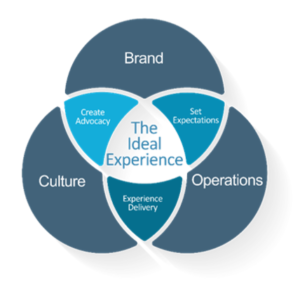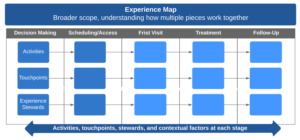
Consumerism in Healthcare: Why VOC is at the Core of Healthcare Consumerism [And How to Listen Better]
Loyalty to traditional brands continues to decrease. Today’s consumers don’t hesitate to switch providers or abandon their first-choice hospital if they find access difficult or have a poor experience. So you MUST include well-designed Voice the Customer gathering practices. VOC is at the core of healthcare consumerism.
The experience provided represents some of the best opportunities to create patient loyalty and motivate patients to share positive stories with others.
While quality of expertise and treatment continually rank at the top when examining patient decision factors, quality is an expected as cost-of-entry and is difficult for patients to assess. Experience-related factors often serve as a proxy that signifies quality. In other words, patients are unable to measure quality of clinical care but they can quantify how long it took them to get an appointment, how long they waited in the office, and the extent to which they felt listened to by their physician. Even if a hospital is first-choice due to reputation for clinical expertise, today’s consumers are quick to abandon it if they find it difficult to access or have a poor experience. It’s no surprise that the patient experience is a strategic imperative among 90% of healthcare executives (based on APQC/Gelb/Beryl benchmarking study).
The ideal experience is delivered through linking brand, culture and operations. Leaders must translate expectations to the organization, assign priorities and reinforce expected behaviors. Delivering an exceptional experience requires a disciplined approach and a deep understanding of customers.
One of the best ways to achieve results is through obtaining in-depth understanding your customers’ experiences by capturing the voice of the customer. Direct and actual customer feedback provides actionable insight. Feedback should capture both functional needs (what is done) and emotional needs (how customers feel about the interactions). Patient feedback is important, but so is that of referring physicians, donors, and employees.
A tool that Endeavor uses frequently is Experience Mapping. This in-depth qualitative research technique uses visual clue (the experience map) to help patients recall each stage of their journey. Compared to a journey map, an experience map is broader in scope and allows for more variation in the journey, this useful for understanding how multiple pieces of the journey fit together and assessing omnichannel touchpoints.
For those who are constrained by budgets, there are also inexpensive tools to meaningfully connect with patients, including:
- Flip Cam: Patients volunteer to provide a first-person view of what it’s like to be a patient (may need be staged as HIPAA prohibits videos being taken of other patients).
- Digital Audio Recorder: Speak with patients about their experience and obtain their consent digitally record the conversation. Word-for-word translations serve to develop personas, evoke empathy, and build consensus for change.
- Camera: Sit in all the chairs you require patients to sit in and take a snapshot. This helps identify if patients are required to sit in a large number of seats prior to the completion of the encounter. You can also see from their perspective what cues are being signaled regarding quality of service.
- Huddles: Take out dedicated time to include all members of the care team – physicians, nurses, administrative support and talk about the patient experience. These interactions could only be about 10 minutes and some have found success including this as an agenda item on routine meetings.
- Dashboard Posters: Place success measures and performance results in a highly visible place to reinforce the importance of the experience. This also provides an opportunity to celebrate successes.

- Comment Wall: Have spare wall space? Post patient/family and staff comments of praise to reinforce expected behaviors. Normally this should be in a staff room, not a public space.
- Email: Take time to send an email to the entire team to highlight a patient comment. This demonstrates leadership’s commitment to an exceptional experience and is an opportunity for praise. This praise, when widely distributed, shows that the team holds each other accountable for success.
- Volunteer: Take advantage of healthcare’s unique opportunity to interact with patients and families. Whether it’s providing information or supporting patients, this will connect you more strongly to patients, see how other departments function, and reconnect you to the reason why you enjoy working in the industry. This is different from rounding, which still puts you in a position of authority, thus patients might not share all of their concerns and staff members may behave differently around you.
Regardless of which tool you use, understanding the voice of the customer and integrating it into marketing and operational decisions is critical to meeting the evolving needs of customers.

John M. McKeever
Chief Growth Officer
John McKeever supports leaders who are seeking to make high impact changes in their business, primarily to advance strategies for growth and business optimization. He organizes and oversees teams who develop market insight, nurture high performance teams, deploy purpose driven communications,…
Let’s Talk
We will help you overcome strategic challenges to realize the business value you seek.

